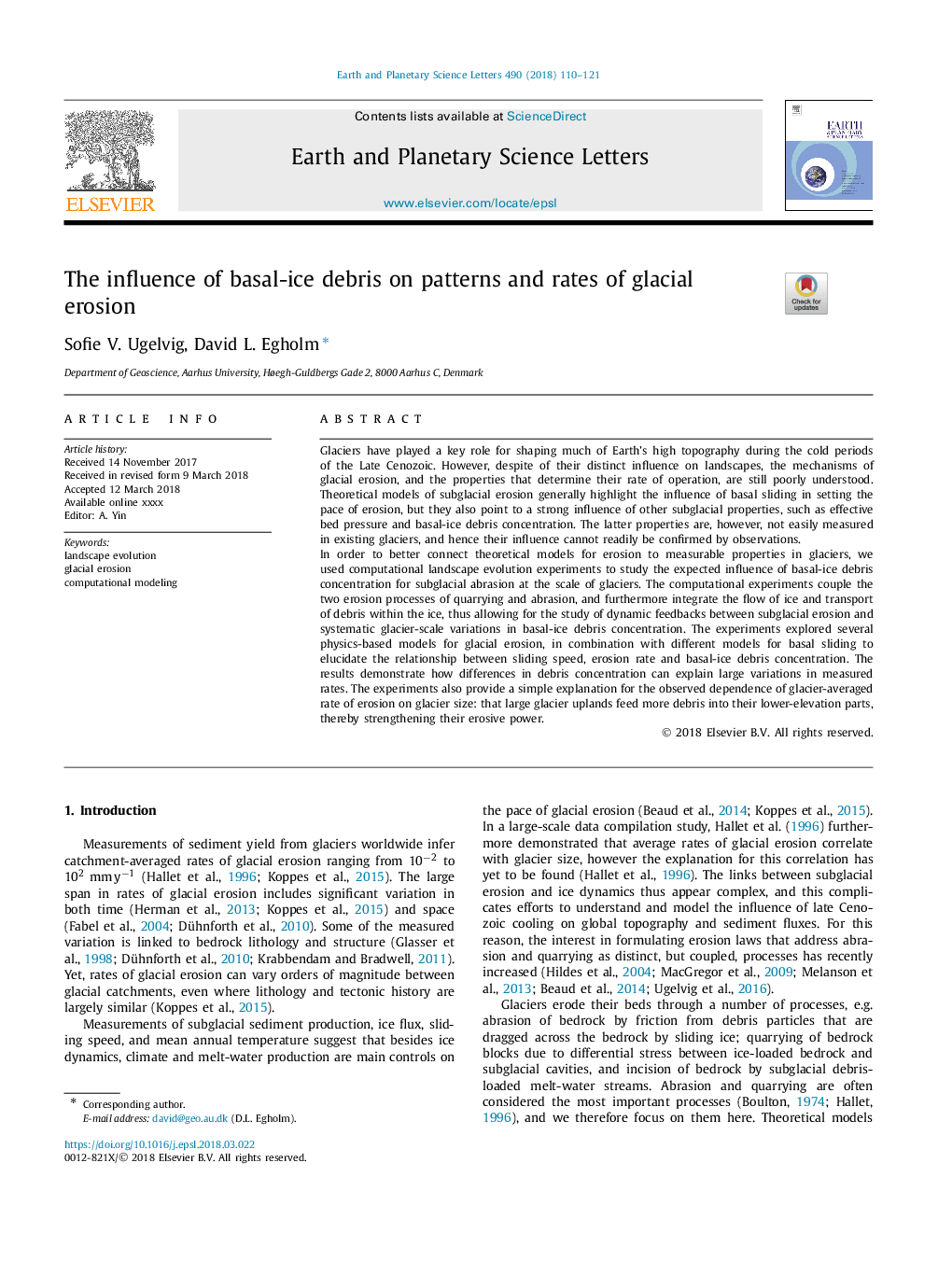| Article ID | Journal | Published Year | Pages | File Type |
|---|---|---|---|---|
| 8906979 | Earth and Planetary Science Letters | 2018 | 12 Pages |
Abstract
In order to better connect theoretical models for erosion to measurable properties in glaciers, we used computational landscape evolution experiments to study the expected influence of basal-ice debris concentration for subglacial abrasion at the scale of glaciers. The computational experiments couple the two erosion processes of quarrying and abrasion, and furthermore integrate the flow of ice and transport of debris within the ice, thus allowing for the study of dynamic feedbacks between subglacial erosion and systematic glacier-scale variations in basal-ice debris concentration. The experiments explored several physics-based models for glacial erosion, in combination with different models for basal sliding to elucidate the relationship between sliding speed, erosion rate and basal-ice debris concentration. The results demonstrate how differences in debris concentration can explain large variations in measured rates. The experiments also provide a simple explanation for the observed dependence of glacier-averaged rate of erosion on glacier size: that large glacier uplands feed more debris into their lower-elevation parts, thereby strengthening their erosive power.
Related Topics
Physical Sciences and Engineering
Earth and Planetary Sciences
Earth and Planetary Sciences (General)
Authors
Sofie V. Ugelvig, David L. Egholm,
